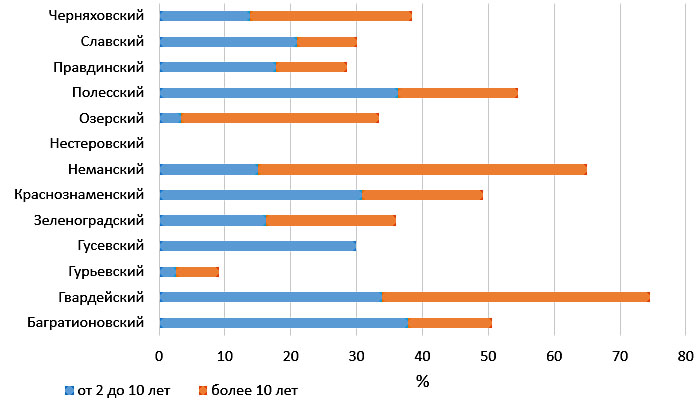Analysis of the dynamics of abandoned lands in the Kaliningrad region
DOI:
https://doi.org/10.31251/pos.v7i3.262Keywords:
abandoned lands; unused arable land; acreage.Abstract
The aim of the study. Establishing the causes and patterns of variation in the areas of abandoned agricultural land.
Location and time of the study. The studies were conducted focusing the territory of the Kaliningrad region and embrace the 1990–2023 period.
Methods. Methods of analysis of archived materials and chronosequences (abandoned lands, unused arable land, their acreage), as well as correlation analysis of the data series were used.
Results. The emergence and spread of abandoned lands occurred along the sequence of three microperiods with different specifics of land use. The largest areas of abandoned lands were typical for 2010, when their share reached 49% of the total area of agricultural land. The implementation of regional programs aimed at re-involving unused agricultural land into circulation led to a decrease in the area of abandoned lands. It was established that 86% of the abandoned lands dynamics was related to the variation in acreage, thus explaining the current crop specialization of agriculture in the region.
Conclusions. In the Kaliningrad region, there has been a negative trend in the area of abandoned lands since 2011. The slowdown in this process is due to both objective reasons and legal aspects of land use.
Downloads

Downloads
Published
How to Cite
Issue
Section
License
Copyright (c) 2024 The Journal of Soils and Environment

This work is licensed under a Creative Commons Attribution 4.0 International License.






